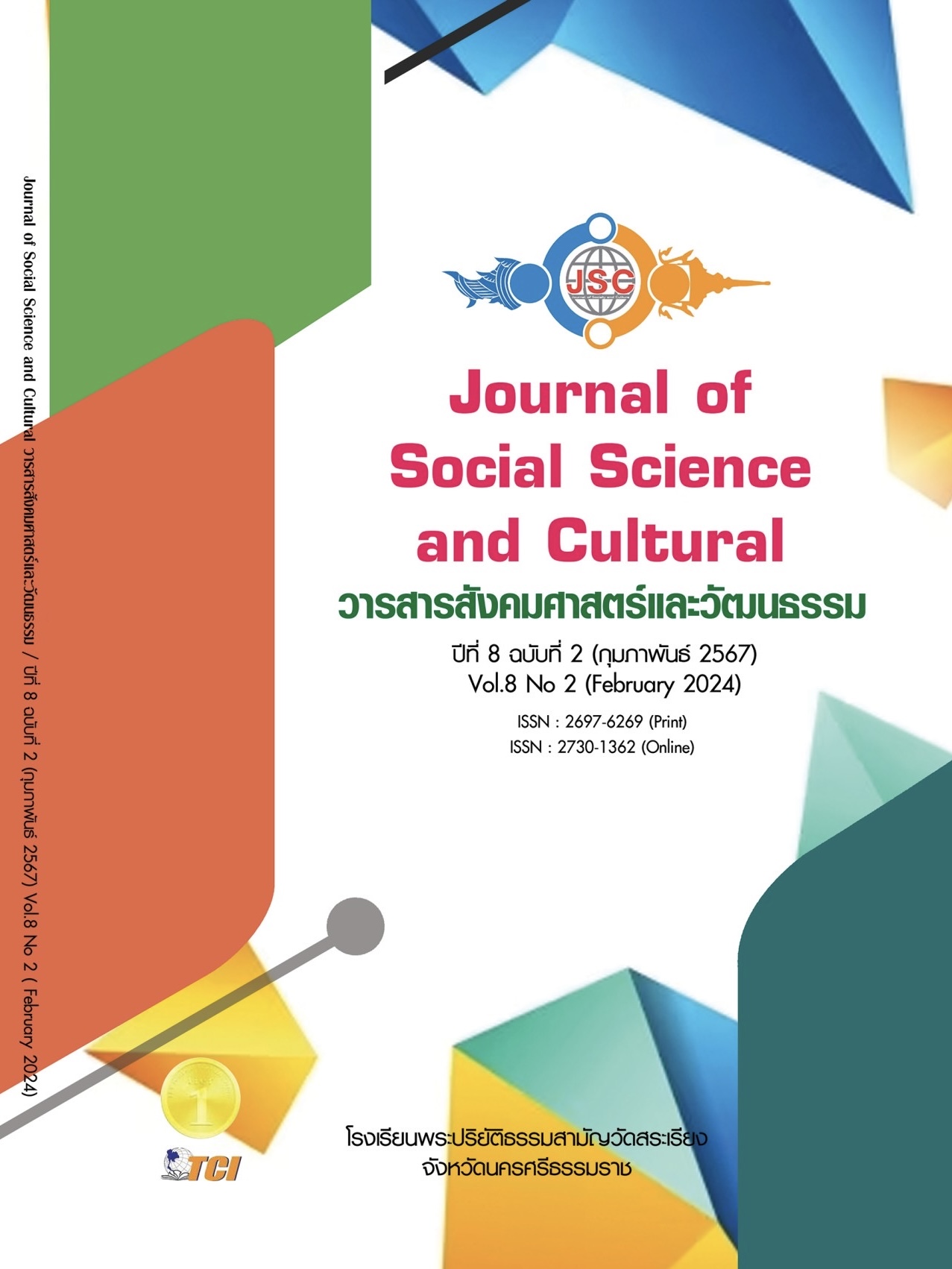กลยุทธ์การใช้หนังสือพิมพ์เฉพาะกิจเพื่อการรณรงค์หาเสียงเลือกตั้งท้องถิ่น
Main Article Content
บทคัดย่อ
บทความวิชาการเรื่อง กลยุทธ์การใช้หนังสือพิมพ์เฉพาะกิจเพื่อการรณรงค์หาเสียงเลือกตั้งท้องถิ่น เป็นการนำเสนอความรู้ กลยุทธ์การใช้สื่อที่เชื่อมโยงการผลิตการออแบบสาร การกำหนดแนวคิดหลัก กำหนดประเด็น วางโครงสร้างเนื้อหาด้านคุณลักษณะผู้นำการเมืองท้องถิ่นที่พึงประสงค์ การเลือกใช้สื่อมีความสำคัญต้องสอดคล้องกับผู้รับสารคือประชาชนกลุ่มเป้าหมายด้วย “สาร” หรือเนื้อหาสาระ ถ้อยความ ภาพ สัญลักษณ์ การสร้างสรรค์การผลิตและใช้สื่อแบบบูรณาการ การออกแบบสารมีความสำคัญต่อการเลือกใช้สื่อและความพึงพอใจ การสร้างเนื้อหาสาระ ด้านความรู้ ประสบการณ์ วิสัยทัศน์ นโยบายหาเสียง เขียนเชิงสร้างสรรค์ ออกแบบจัดหน้า นำเสนอสร้างเครือข่ายและการเชื่อมโยงชุมชนท้องถิ่น การผลิตการเลือกใช้สื่อสร้างความตระหนักรู้ สร้างความรู้ความเข้าใจ สร้างการจดจำ สร้างความนิยมชมชอบ สร้างความเชื่อ กระตุ้นให้เกิดพฤติกรรม ให้มีความสอดคล้องกันทั้งการใช้ช่องทางและการขยายผล การเข้าถึง ความถี่ในการเข้าถึง คำนึงถึงประโยชน์ความคุ้มค่า สร้างการรับรู้ ยอมรับ จดจำ ความรู้สึกที่ดี ที่ประทับใจ สร้างความนิยมทางการเมือง กลยุทธ์การใช้หนังสือพิมพ์เฉพาะกิจเพื่อการรณรงค์หาเสียงเลือกตั้งท้องถิ่น การวางแผนการใช้หนังสือพิมพ์เฉพาะกิจทางการเมือง ไปยังประชาชนกลุ่มเป้าหมายผู้รับสารเข้ามาสนับสนุนเพิ่มมากขึ้น ด้วยกลยุทธ์การผลิตและการใช้แตกต่างจากที่มีอยู่ในสังคม รูปแบบการนำเสนอ เทคนิคการการออกแบบสารด้านคุณลักษณะที่พึงประสงค์ของผู้นำการเมืองท้องถิ่นกระชับ เข้าใจง่าย กลวิธีการใช้หนังสือพิมพ์เฉพาะกิจหาเสียงเลือกตั้งทางการเมืองท้องถิ่นร่วมกับสื่อบุคคลหรือแกนนำทางการเมือง การประยุกต์สื่อใหม่ในรูปแบบ e-book และ infographic บูรณาการใช้ในสังคมออนไลน์ สร้างพลังการสื่อสารในงานการเมืองที่ทรงพลัง
Article Details
References
กาญจนา โชคเหรียญสุขชัย. (2550). การสื่อสารเชิงอวัจนาภาษา : รูปแบบและการใช้. กรุงเทพมหานคร: จุฬาลงกรณ์มหาวิทยาลัย.
กานต์ บุญศิริ. (2566). การหาเสียงเลือกตั้งผ่านสื่อสังคมออนไลน์ของผู้สมัครรับเลือกตั้งนายกองค์การบริหารส่วนจังหวัดสงขลา พรรคประชาธิปัตย์. วารสารมนุษยสังคมสาร, 20(3), 167-168.
กิตติ์รวี เลขะกุล และนุกูล ชิ้นฟัก. (2563). บทบาทหนังสือพิมพ์ท้องถิ่นกับการส่งเสริมการมีส่วนร่วมทางการเมืองของประชาชนในเขตอำเภอหาดใหญ่ จังหวัดสงขลา. วารสารวิทยาลัยสงฆ์นครลำปาง, 9(2), 136-151.
ณัฐฐ์วัฒน์ สุทธิโยธิน. (2563). การประยุกต์ใช้นวัตกรรมการสื่อสาร ในประมวลผลสาระชุดวิชานวัตกรรมการสื่อสาร (หน่วยที่ 6). นนทบุรี: สำนักพิมพ์มหาวิทยาลัยสุโขทัยธรรมาธิราช.
ปราณี สุรสิทธิ์. (2549). การเขียนสร้างสรรค์เชิงวารสารศาสตร์. กรุงเทพมหานคร: สำนักพิมพ์แสงดาวจำกัด.
พนม คลี่ฉายา. ( 2555). การสร้างสรรค์และผลิตงานประชาสัมพันธ์ ในเอกสารการสอนชุดวิชาการสร้างสรรค์และผลิตงานประชาสัมพันธ์ (หน่วย 11-15 หน้า 11-9 ). นนทบุรี: มหาวิทยาลัยสุโขทัยธรรมาธิราช.
พิศิษฐ์ ชวาลาธวัช และคณะ. (2539). การรายงานข่าวขั้นสูง. กรุงเทพมหานคร: สำนักพิมพ์ดอกหญ้า.
วิชัย พยัคฆโส. (2542). การพิมพ์ยุคโลกาภิวัฒน์ เอกสารประกอบการสัมมนาเรื่อง การจัดเตรียมและวางแผนเพื่อการผลิตสื่อสิ่งพิมพ์ ณ สำนักส่งเสริมและฝึกอบรม มหาวิทยาลัยเกษตรศาสตร์. กรุงเทพมหานคร: มหาวิทยาลัยเกษตรศาสตร์.
สกล ภู่งามดี. (2546). การออกแบบและผลิตงานโฆษณา. กรุงเทพมหานคร: แซท โฟว์ พริ้นติ้ง จำกัด.
สุภาภรณ์ ศรีดี. (2563). สื่อประชาสัมพันธ์ในงานปกครองท้องที่ ในเอกสารการสอนชุดวิชาการการสื่อสารและเทคโนโลยีการสื่อสาร. นนทบุรี: สำนักพิมพ์มหาวิทยาลัยสุโขทัยธรรมาธิราช.
สุรพงษ์ โสธนะเสถียร. (2556). ทฤษฎีการสื่อสาร. กรุงเทพมหานคร: โรงพิมพ์มหาวิทยาลัยธรรมศาสตร์.
สุรสิทธิ์ วิทยารัฐ. (2549). การผลิตสื่อสิ่งพิมพ์. (พิมพ์ครั้งที่ 5). กรุงเทพมหานคร: ศูนย์หนังสือสวนสุนันทา.
Almond, G. A. & Verba, S. (2015). The civic culture: Political attitudes and democracy in five nations. NJ, USA: Princeton university press.
McQuail, D. (1987). Mass communication theory: An introduction. (2nd Ed.). CA, USA: Sage Publications, Inc.

